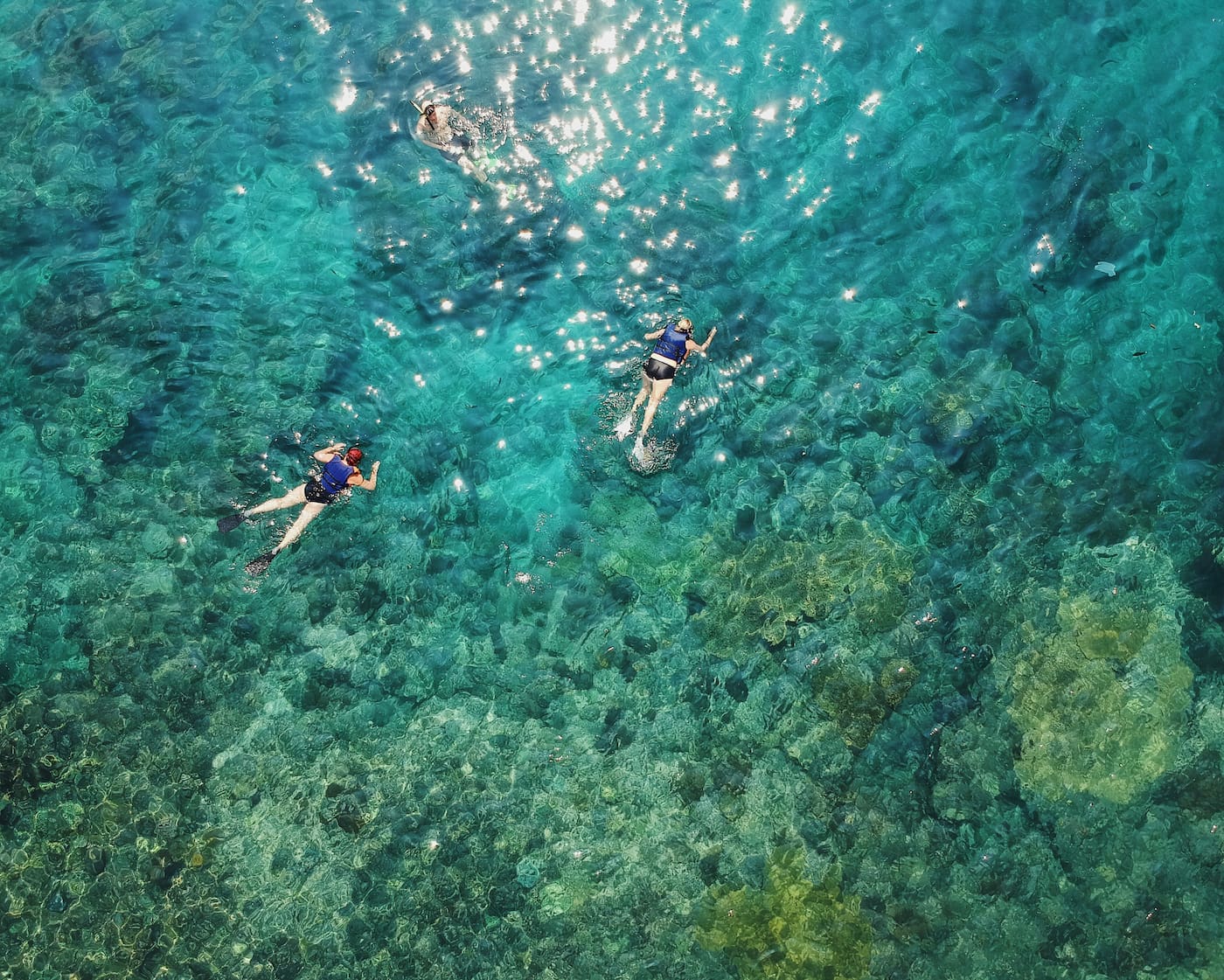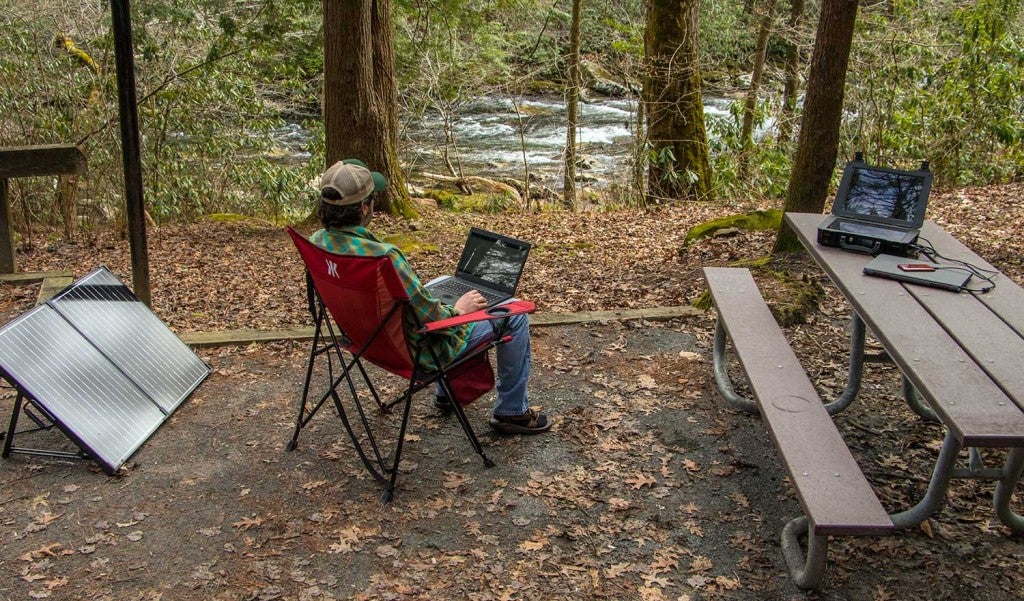This article is brought to you by Stream2Sea, whose wide array of quality skin and hair care products include sunscreen for face, leave in conditioner, and some of the best lip balm with spf on the market. The best part? Everything Stream2Sea makes is produced with high-quality, natural ingredients that are good for you and the environment.
So, you’re all packed up for that epic beach camping trip, but you need just one more thing: sunscreen. In a typical grocery store, it’s easy to assume that all sunscreens are equal. But if you look closely you’ll see a vast difference in ingredients listed and the advertised quality of each (“reef safe,” “chemical free,” etc.), not to mention the discrepancy in price. While “mineral sunscreen” might be a foreign concept to many first-time buyers, the differences between organic sunscreens and mineral sunscreen products on the market are significant and have a major impact on the environment.
Mineral Sunscreen vs. Organic Sunscreen: The “Organic” Fallacy

Since the explosion of the natural foods movement, “organic” has been slapped on everything from cilantro to shampoo to ice cream. For the most part, organic foods and ingredients are generally better than non-organic alternatives. In grocery stores, vitamin shops, and restaurants, the move toward organic ingredients and products has allowed for everyday consumers to get a better sense for exactly what they’re consuming on a regular basis.
Awesome, right? We think so too! Here’s the catch: while this trend has led many to believe that everything organic is better than products not labeled “organic,” in the world of sunscreen, that’s not necessarily the case. Why? Because the so-called “organic” ingredients that go into an organic sunscreen are still chemicals, and even though they’re technically FDA-approved as organic, these chemicals like avobenzone, oxybenzone, and octyl methoxycinnamate are not what any typical consumer should consider a healthy alternative to normal sunscreen products.
In fact, these so-called organic chemicals are damaging and harmful to people and oceans alike, while still claiming to be either “reef-safe” or healthier than the traditional, non-organic alternatives.
What’s Better About Mineral Sunscreen?

While there are a number of reasons that mineral sunscreen products should be used an alternative to organic sunscreens, we’ll focus on some of the main facts behind the chemicals used in creating sunscreen products, the process by which sunscreen actually works, and the positive environmental impact of mineral-based skincare products.
Mineral Sunscreen Is Chemically Risk-Free
If you haven’t already, look into the chemicals that are in nearly every organic sunscreen product on the market. While avobenzone is an obvious detriment to both the environment and your body, even “avobenzone free” sunscreens still contain oxybenzone and octinoxate, two chemicals known to cause the same type of hormone disruption, coral bleaching, and aquatic toxicity that’s currently killing ruining the world’s favorite coastlines and snorkeling destinations.
On the contrary, mineral sunscreen products like Stream2Sea’s offer a titanium dioxide-based sunscreen product that contains zero chemicals harmful to fish or humans. Stream2Sea’s mineral sunscreen is made from titanium dioxide (nanopartical free, if you’re a biochem nerd like we are!) along with water, green tea leaves, tulsi, seaweed, and ale leaf juice. While it’s still certified organic, it’s not the organic label that makes it effective, it’s the fact that each and every ingredient is safe and non-toxic to the human body. What’s more, it’s been widely used for sensitive skin with extremely positive results.
Mineral Sunscreen Reflects, Traditional “Organic” Sunscreens Absorb
Ever wondered why you still get a tan if you’re wearing sunscreen? It’s because chemical sunscreen products actually absorb UV rays coming from the sun. That means all the light that hits your skin is actually taken into your body, leading to a slight tan or burn, and, more importantly, leading to a large amount of UV light being absorbed into the under layers of your body.
Mineral sunscreen, like Stream2Sea, works differently. Their sunscreen actually reflects the majority of harmful UV rays. The titanium dioxide particles present in their product scatter the sun rays that come into contact with your skin, resulting in most of the light being reflected away from your body, and very little light actually getting absorbed. While this is definitely better for your body, it’s also the reason that, when used properly, mineral sunscreen often won’t result in a tan or sunburn. If you do find yourself getting sunburned while using a mineral sunscreen, revisit your application process, and be sure to look into a few natural sunburn remedies while you’re at it!
Mineral Sunscreen Is Officially Environmentally Safe
Unfortunately, even certain “reef-safe” sunscreens on the market contain the chemicals we’ve discussed that cause coral bleaching and raise aquatic toxicity levels by substantial amounts. In fact, recent studies have shown that many of these “safe” sunscreen products are actually doing more damage than ever before, as beachgoers, snorkelers, and anglers all partake in products that are believed to be environmentally safe.
These studies revealed that typical “organic,” chemical-based sunscreens have the capacity to severely affect aquatic life via coral bleaching and an increase in aquatic toxicity levels, which eventually kills fish and leads to full on “dead zones” forming along once-rich underwater environments. Studies show over 58% of coral reefs are currently at risk from human impact, much of which has been exacerbated by the use of toxic chemical products. That said, Stream2Sea’s mineral sunscreen has been tested in aquatic environments, and contains zero ingredients that impact fish feeding behaviors or the health of coral reefs. There are currently no official tests to designate which sunscreen products on the market are coral reef safe, so Stream2Sea’s self-initiated test remains one of the most transparent examples of what truly healthy, reef-safe, biodegradable mineral sunscreen products actually look like.
What’s more, coral reefs can recover, when left to regenerate and re-establish their flourishing ecosystems in peace, and when visitors to these reefs are careful to use mineral sunscreen products each time they go for a swim.
Mineral Sunscreen vs. Organic Sunscreen: What Can I Do?

While we’re not asking you to immediately throw away all of your chemical-based sunscreens, it’s important to be mindful of the potentially harmful effects of “traditional” products that you may have relied on in the past. Chemicals in sunscreen are used because they can be made into inexpensive products at a high SPF, but in reality they are highly unstable and degrade quickly in high temperatures (ever had to apply runny sunscreen in hot weather? It’s a sign that the chemicals are breaking down). By using mineral sunscreen products, you can make a definitive choice to keep your body and the environment as healthy as possible.
While mineral sunscreen goes on whiter than traditional sunscreen, the lack of clear, aesthetic appeal is well worth the use of safe, environmentally-friendly products like Stream2Sea. Just like with truly organic, nutrient-rich health foods, spending a few extra bucks to spring for the mineral sunscreen the next time you’re at the supermarket will pay off for you, your family, and the future of the world’s oceanic ecosystem.
This article was brought to you by Stream2Sea

Stream2Sea’s products are avobenzone and octinoxate free, meaning there’s absolutely nothing you need to worry about when it comes to applying them on a regular basis!
The Dyrt is the only camping app with all of the public and private campgrounds, RV parks, and free camping locations in the United States. Download now for iOS and Android.Popular Articles:
Articles on The Dyrt Magazine may contain links to affiliate websites. The Dyrt receives an affiliate commission for any purchases made by using such links at no additional cost to you the consumer.



